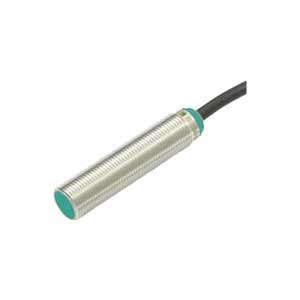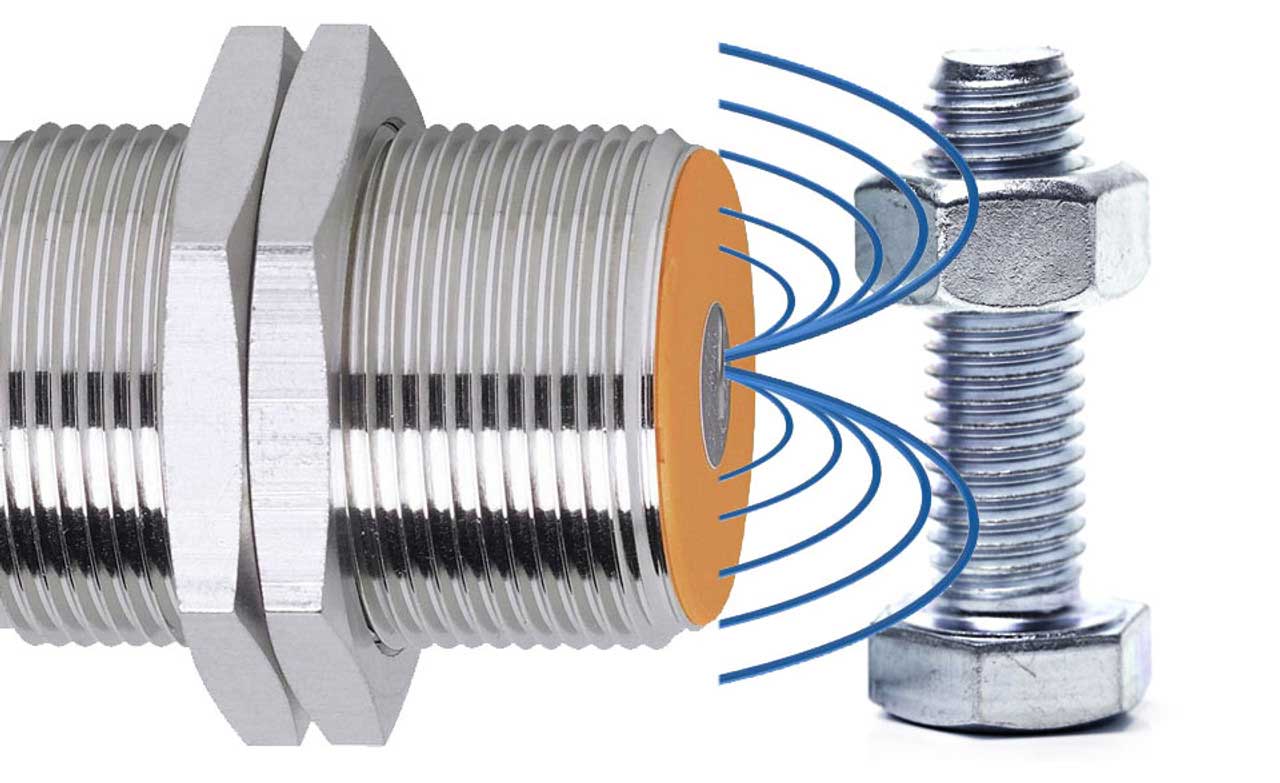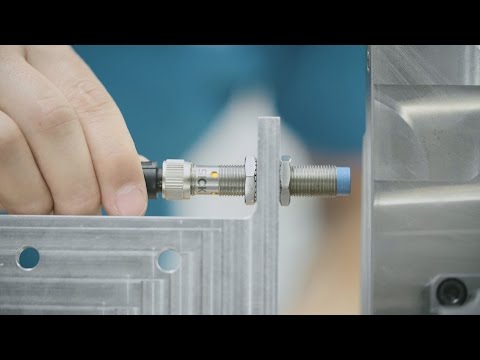Comprehensive Proximity Sensors Guide
Proximity sensors are a vital component in industrial automation and manufacturing processes. These sensors detect the presence or absence of objects without any physical contact, making them ideal for a wide range of applications.
In this guide, we will take a closer look at proximity sensors and how they work. We’ll explore the different types of proximity sensors, including inductive and capacitive sensors, and compare their strengths and weaknesses. We’ll also discuss how to choose the right sensor for your specific needs and troubleshoot.
Finally, we’ll delve into the future of proximity sensors and the exciting developments on the horizon. Whether you’re new to proximity sensors or looking to expand your knowledge, this guide will provide you with a solid foundation to work from.
Let’s start!
In this guide, we’ll take a look at:
-
What is a Proximity Sensor?
-
Proximity Sensor Types
-
What is Inductive Proximity Sensor & How it Works
-
What is Capacitive Proximity Sensor & How it Works
-
What is the difference between Inductive and Capacitive Proximity Sensors?
-
Applications of Inductive Sensors
-
Choosing the Right Proximity Sensor
-
Installation of Proximity Sensors
-
Maintenance of Proximity Sensors
-
Troubleshooting Proximity Sensor Issues
What is a Proximity Sensor?
A proximity Switch detects objects without contact using electromagnetic fields or emitted signals. Proximity switches are used in a wide range of applications, including industrial automation, robotics, automotive systems, and consumer electronics.
They provide a non-contact method for detecting objects, enabling automation, control, and inter-activity in various systems and devices.
In general, both proximity sensors and proximity switches work on the same principle of detecting the presence of an object without physical contact.
So, while there may be slight differences in how these terms are used by different manufacturers, the underlying technology and function of proximity sensors and proximity switches are essentially the same.
Proximity Sensor Types
Proximity switches can be categorized into different types based on their operating principles and technologies. Here are some common types of proximity switches:
Inductive Proximity Sensors: These sensors identify the existence of metallic objects by creating a magnetic field with a high frequency. Inductive proximity sensors are widely used in industrial automation for object detection, position sensing, and control.
Capacitive Proximity Sensors: Capacitive sensors detect the presence of objects based on changes in an electrical field. They consist of an oscillator circuit that generates an electro Magnetic field. When an object approaches the sensor’s sensing surface, it alters the capacitance, causing a change in the oscillator’s frequency. Capacitive proximity sensors can detect both metallic and non-metallic objects, making them versatile in various industries.
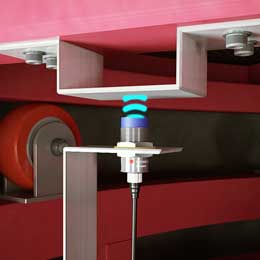
These are some of the commonly used types of proximity sensors. Each type has its own working principle, advantages, and applications, enabling diverse sensing capabilities in various industries and systems.
What is Inductive Proximity Sensor & How it Works
Inductive proximity sensors are non-contact sensors that detect the presence of metallic objects within their sensing range. They are widely used in industrial automation applications. Inductive sensors come in various shapes and sizes and can detect a wide range of metal objects.
How Inductive Proximity Sensors Work
Inductive proximity sensors work by generating a high-frequency magnetic field around the sensing face. When a metallic object enters the sensing distance, it disturbs the magnetic field and changes the inductance of the coil. The sensor detects the change and triggers a signal to control a device or process.
Inductive switches can detect metal objects at different distances, depending on the sensor’s size and type. They are resistant to environmental conditions like dirt, dust, and moisture, and are unaffected by changes in ambient light. These features make them ideal for use in harsh industrial environments where other types of sensors may fail.
What is Capacitive Proximity Sensor & How it Works
Capacitive sensors detect any object, regardless of material, by sensing changes in an electrical field. They are used in industries like food and beverage, packaging, and Medicines to detect non-metallic objects.
How Capacitive Proximity Sensors Work
The capacitive proximity sensor working principle is based on the principle of capacitance. Capacitive proximity sensors consist of a sensing surface and an oscillator circuit that generates an electromagnetic induction field around the sensor. When an object gets near the sensor, the capacitance changes, causing the oscillator frequency to change.
The capacitive sensor’s surface acts like a capacitor plate, with the sensed object as the other plate. The generated electromagnetic field serves as the insulating material between the plates. Changes in the plate distance alter the sensor’s capacitance.
The change in capacitance results in a change in the oscillator frequency, which is detected by the sensor’s output circuit. The frequency change indicates object presence and triggers a signal for tasks like counting, measuring, or process control.
What is the difference between Inductive and Capacitive Proximity Sensors?
A table comparing the key characteristics of inductive and capacitive proximity sensors:
| Characteristics | Inductive Proximity Sensors | Capacitive Proximity Sensors |
|---|---|---|
| Detection Principle | Electromagnetic field disruption by metallic objects | Change in capacitance caused by any object, regardless of material |
| Sensing Distance | Short to long range, typically up to several centimeters | Short to medium range, typically up to a few centimeters |
| Material Detection | Detects metallic objects | Detects any object, including non-metallic ones |
| Sensitivity | Sensitive to metals and their alloys | Sensitive to changes in the dielectric constant of the target object |
| Environmental Conditions | Resistant to harsh environments with dust, oil, and water | Sensitive to environmental factors such as humidity, temperature, and air quality |
| Cost | Generally less expensive than capacitive sensors | Generally more expensive than inductive sensors |
| Applications | Industrial automation, machine tools, automotive industry | Level detection, material handling, food and beverage industry |
Proximity sensors detect objects without contact using electro Magnetic fields or emitted signals. Specifications and performance may vary depending on the manufacturer and model.
Applications of Inductive Sensors
Proximity sensors are widely used in many industries because they can detect objects without touching them. Here are some common applications of proximity sensors:
Object Detection: Proximity sensors are widely used for object detection range in various industries. They can detect the presence of objects on conveyor belts, assembly lines, or in robotic systems. This enables automated processes, quality control, and efficient material handling.
Position Sensing: Proximity sensors are employed to determine the position of objects or machine parts. They detect positions in robotics, CNC machines, and automated systems for accurate component placement.
Level Detection: Proximity Switches are used for level detection in tanks, containers, or pipelines. They sense liquids, granular materials, or powders to monitor and control filling or emptying processes.
Parking Assistance: Proximity sensors play a crucial role in parking assistance systems in automobiles. They detect objects nearby, like walls or vehicles, and provide feedback to help drivers park safely and accurately.
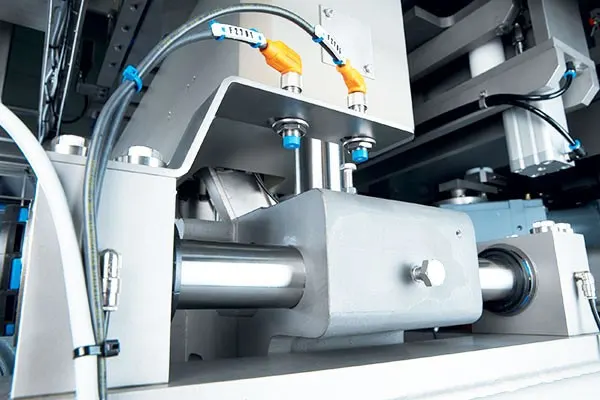
Security Systems: Proximity sensors are utilized in security systems for access control and intruder detection. They can detect the presence of individuals or objects in restricted areas and trigger alarms or other security measures.
Human-Machine Interface: Proximity sensors are integrated into touchscreens, touchpads, or gesture recognition systems to enable intuitive human-machine interaction. They detect the proximity or touch of a user’s finger, allowing for seamless control and input.
Conveyor Systems: Proximity sensors are used in conveyor systems for various functions. They can detect the presence of objects to ensure proper spacing, prevent collisions, or control the flow of materials.
Robotics and Automation: Proximity sensors are extensively used in robotics and automation systems. They aid in object detection, obstacle avoidance, and precise positioning of robotic arms or grippers.
Packaging and Material Handling: Proximity switches play a crucial role in the packaging and material handling industries. Proximity Switch detects objects on conveyor belts, ensuring proper sorting and packaging.
These are just a few examples of the diverse applications of proximity sensors across various industries. Their non-contact sensing capability and reliability make them invaluable in automation, control systems, safety systems, and human-machine interfaces.
Choosing the Right Proximity Sensor
To select the right proximity sensor for your application, consider key factors during the decision-making process. Here are some important considerations to keep in mind:
Required Capacitive or Inductive Proximity Sensors: The type of proximity sensor you need depends on the material you want to detect. Inductive sensors are best suited for metallic objects, while capacitive sensors are better for non-metallic objects.
Sensor Design: Proximity sensors come in different designs, including cylindrical proximity switch and cubic/rectangular proximity sensors. The choice of design will depend on the mounting requirements of your application and the available space.
Sensor Dia or Sensor Size: The sensor size depends on the object’s size and where it will be mounted. It is important to choose a sensor with a diameter or size that is appropriate for your application.
Output: Proximity sensors can have different types of output signals, such as PNP, NPN, or two-wire outputs. The output type depends on your application’s needs and the compatible input for your system.
Switching Function: Proximity sensors can have either Normally Open (NO) or Normally Closed (NC) switching functions. The choice of switching function will depend on the requirements of your application.
Mounting: Proximity sensors can be mounted in a flush or non-flush manner. Flush mounting is ideal for tight spaces, while non-flush mounting is preferable for detecting objects at a distance.
Electrical Connection: Proximity sensors can have either cable or connector-type electrical connections. The connection type depends on your application’s needs and the compatible input for your system.
By considering these factors, you can select the right proximity sensor for your application, ensuring reliable and accurate detection of objects.
Check Our Latest Blog: Proximity Sensor Terminologies 50+ Terms, You Should Know
Installation of Proximity Sensors
Proximity sensors are important components in many industrial applications, and proper installation and maintenance are essential for their effective operation.
Here are some tips for installing and maintaining proximity sensors:
Choose the right location: The location of the proximity sensor is critical to its performance. The sensor should be installed in a location where it can detect objects with the desired accuracy and range. In addition, the sensor should be protected from environmental factors such as temperature, humidity, and vibration.
Ensure proper alignment: The proximity sensor should be properly aligned with the object to be detected. This may require mounting the sensor at a specific angle or distance from the object. The sensor should also be mounted securely to prevent movement or vibration.
Check for interference: Proximity sensors can be affected by interference from other electrical or magnetic sources. Make sure to check for potential sources of interference and take appropriate measures to minimize their impact
Use appropriate wiring: Use suitable wiring for the sensor’s electrical needs and installation environment. This may involve using shielded cables to prevent interference or high-temperature-rated cables for hot environments.
Follow manufacturer guidelines: Follow the manufacturer guidelines for installation, including any specific mounting requirements. Improper installation can result in damage to the sensor or inaccurate readings.
Cable routing: When routing the sensor’s cable, make sure to avoid sharp bends or kinks that could damage the cable. If the cable needs to be routed through a tight space, consider using a flexible conduit to protect the cable.
Protection from physical damage: Proximity sensors can be damaged by physical impact or vibration. When installing the sensor, ensure protection from potential impacts or vibrations, such as moving machinery or heavy equipment.
Proper mounting: Proximity sensors can be mounted flush with the object’s surface or non-flush. Make sure to select the appropriate mounting option for your application, and follow the manufacturer guidelines for mounting the sensor.
Temperature considerations: Proximity sensors can be sensitive to temperature changes, particularly if they are installed in harsh industrial environments. Choose a sensor with the appropriate temperature rating for your application and safeguard it from extreme temperature changes.
Chemical resistance: If your application deals with harsh chemicals or solvents, choose a proximity sensor specifically designed to withstand such substances. Not all sensors are suitable for use in chemically aggressive environments.
Electrical considerations: Proximity sensors usually need a power source to function, often using a low-voltage DC signal for output. Ensure the correct power supply and compatible with your electrical system for the output signal.
Environmental factors: Other environmental factors can also affect proximity sensor performance, such as humidity, dust, and vibration. Make sure to select a sensor that is designed to withstand the environmental conditions in your application.
Maintenance of Proximity Sensors
Proximity Sensor regular maintenance is important to ensure that they continue to function reliably. Here are some tips for maintaining proximity sensors:
Regular cleaning: Over time, proximity sensors can accumulate dust, dirt, and other contaminants that can interfere with their operation. Regular cleaning can help to prevent this buildup and ensure accurate readings. Clean the sensor with a soft, dry cloth or gentle cleaning solution, taking care not to damage any components.
Inspection: Sometimes inspect the sensor and its components for any signs of damage or wear. Inspect the housing and mounting hardware for cracks or damage, and check the cable for fraying or other signs of damage. If you notice any issues, replace the sensor or repair any damaged components as soon as possible.
Replacement: Proximity sensors do have a finite lifespan and will eventually need to be replaced. Monitor the age and usage of each sensor, replacing them when signs of wear or unreliability appear.
Cable protection: Make sure that the cable connecting the sensor to the control system is protected from damage and strain. Use cable ties or other strain relief devices to prevent excessive bending or stretching of the cable.
Backup sensors: For critical applications, think about installing backup proximity sensors to ensure uninterrupted operation in case of failure or malfunction. This can help to minimize downtime and reduce the risk of damage to equipment or personnel.
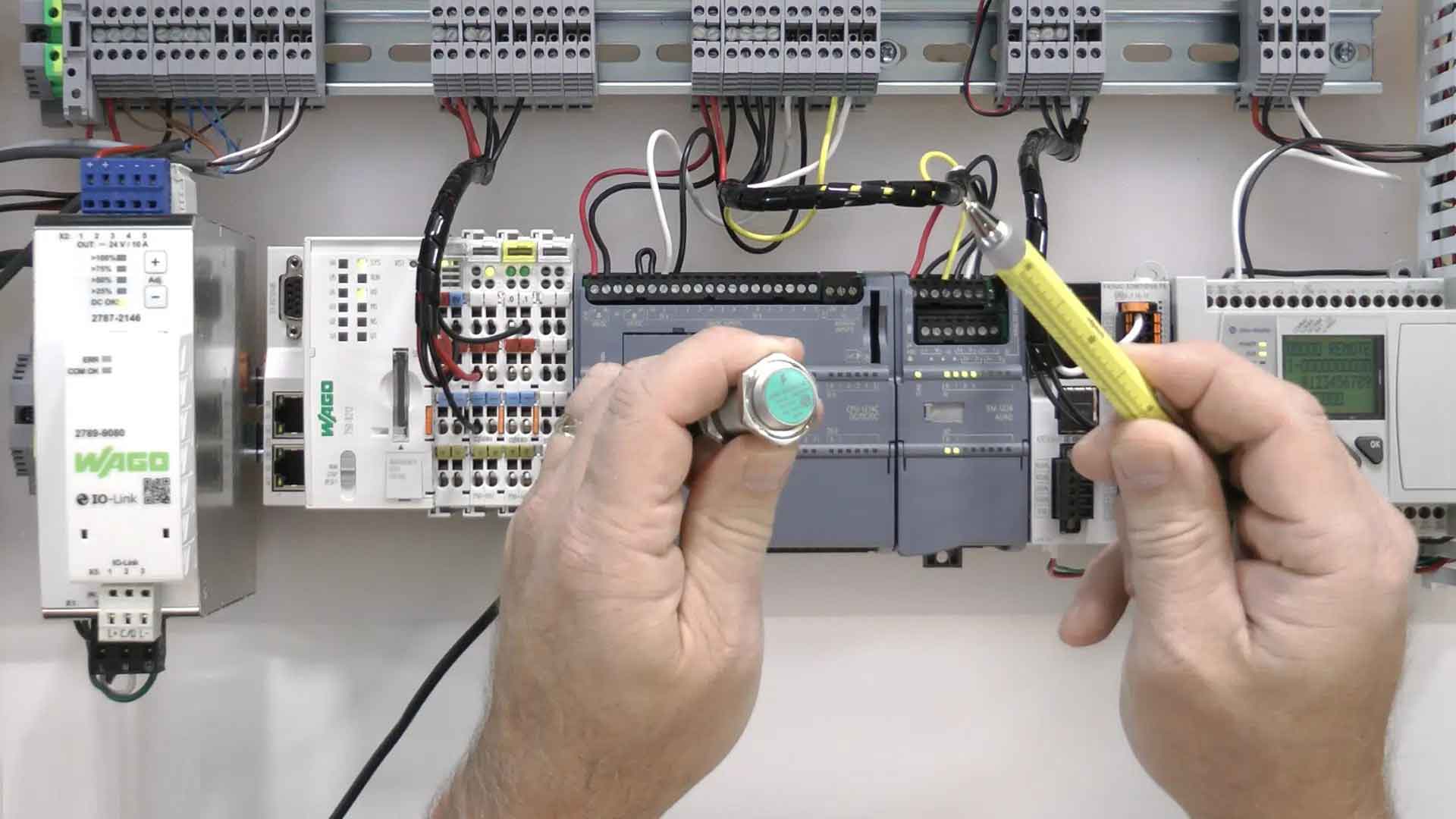
Troubleshooting Proximity Sensor Issues
Troubleshooting proximity sensor issues is important to ensure that industrial automation systems function properly. Common issues include faulty wiring, sensing range problems, and power supply issues.
Follow a systematic troubleshooting approach to quickly identify and resolve issues, keeping systems running smoothly.
Check the wiring: One of the most common issues with proximity sensors is faulty wiring. Make sure that the wiring is properly connected to the sensor and the controller. Also, check for any damaged or broken wires that could be causing the issue.
Adjust the sensing range: Adjust the sensing range if the sensor is not detecting objects within its range. Many sensors have a potentiometer that can be used to adjust the sensing distance. Be sure to consult the sensor’s manual for instructions on how to adjust the range.
Check the power supply: If the sensor is not working at all, it may be due to a faulty power supply. Make sure that the sensor is receiving the correct voltage and that the power supply is functioning properly.
Clean the sensor: Dust and dirt can accumulate on the sensor and interfere with its performance. Clean the sensor with a soft, dry cloth and ensure there are no obstructions in its field of view.
Check for mechanical damage: Proximity sensors can be damaged by physical impacts or other types of mechanical stress. Inspect the sensor closely for physical damage if it has been impacted or subjected to stress.
Check the output signal: If the sensor is sending a signal. If the controller doesn’t recognize the sensor’s signal, there may be a problem with the signal. Use a multimeter to test the output signal and make sure that it is within the expected range.
Check the target material: Different types of proximity sensors are designed to detect different materials. For instance, an inductive sensor detects metal objects, while a capacitive sensor detects non-metallic objects. Make sure that the sensor is appropriate for the target material you are trying to detect.
Test the sensor with a known-good object: To verify the sensor’s functionality, test it using a known-good object. This can help you determine whether the issue is with the sensor or with the object you are trying to detect.
Check for temperature issues: Inductive switch can be sensitive to temperature changes. If the sensor struggles in extreme temperatures, consider using a specialized sensor or adjusting the environment’s temperature.
Replace the sensor: If none of the above troubleshooting steps work, it may be time to replace the sensor. Industrial proximity sensors can wear out over time and may need to be replaced periodically.
Conclusion
The use of proximity sensors has become increasingly important in modern industrial automation and control systems. These sensors provide an efficient and reliable way to detect objects and are utilized in a wide range of applications.
Inductive sensors detect metal objects with magnetic fields, while capacitive sensors detect objects using electrical fields. Each sensor type has its own strengths and weaknesses, making it important to choose the right sensor for the specific application.
When installing and maintaining proximity sensors, it is important to follow best practices to ensure optimal performance and prevent downtime. This involves proper wiring, cleaning, and troubleshooting to ensure effective operation.
In simple, proximity sensors are essential components for optimizing industrial automation and control systems. Selecting the right sensor and following proper installation and maintenance procedures ensure reliable performance.

